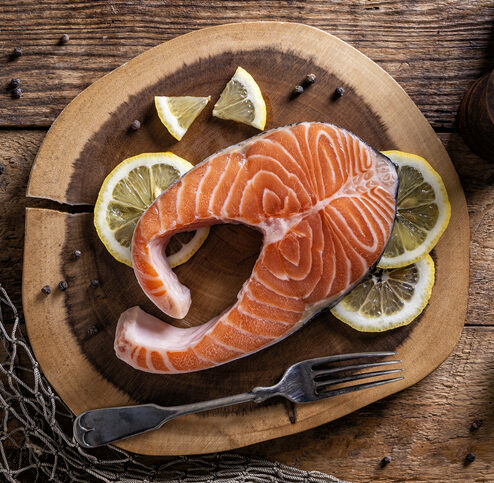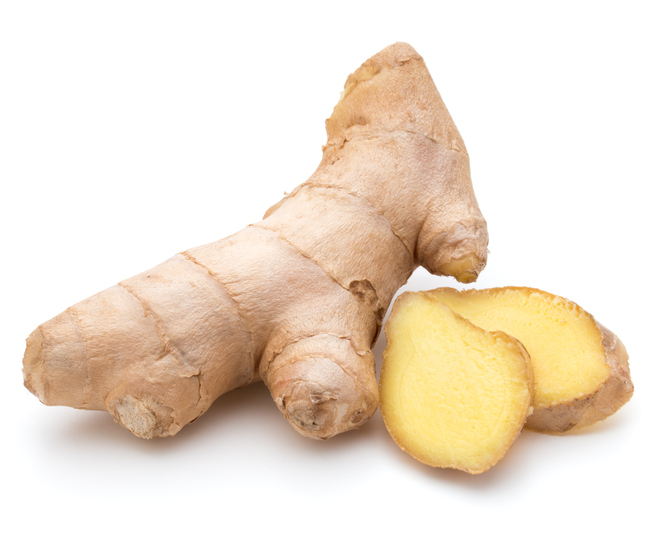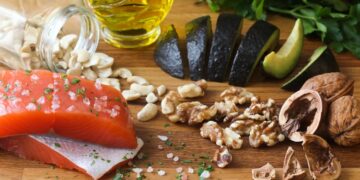What to eat more to reduce inflammation
As we age, we often experience an increase in inflammation in our bodies. Although inflammation is a natural response to injury or infection, when it becomes chronic, it can lead to a host of health problems, including heart disease, diabetes, and arthritis.
Luckily, one of the best ways to fight inflammation is simple: through the foods we eat. Let’s explore the top inflammation fighting foods that can help women over 40 reduce inflammation.

Fatty fish
Omega-3 fatty acids found in fatty fish–EPA (eicosapentaenoic acid) and DHA (docosahexaenoic acid)–have been shown to be particularly effective at reducing inflammation. These fatty acids can help to decrease the production of inflammatory molecules in the body, such as cytokines and prostaglandins. Several studies have demonstrated the anti-inflammatory effects of omega-3 fatty acids in people with various inflammatory conditions, such as rheumatoid arthritis, asthma, and inflammatory bowel disease. Consuming fatty fish has also been associated with a lower risk of heart disease, which is a condition that is often linked to chronic inflammation.
Your inflammation fighting food plan: Aim to eat at least two servings of fatty fish such as salmon, tuna, and mackerel per week to get the full benefits of omega-3 fatty acids. Choose wild-caught seafood whenever possible to minimize the toxic load on the liver.

Berries
Berries such as blueberries, raspberries, and strawberries are packed with loads of antioxidants such as anthocyanins, flavonols, and vitamin C, which can help reduce inflammation and oxidative stress in the body. They also contain fiber, which can promote gut health, and further reduce inflammation. Studies have shown that consuming berries on a regular basis can help to reduce inflammation, particularly in older adults. For example, a 2014 study published in the British Journal of Nutrition found that consuming a daily serving of blueberries for six weeks resulted in significant reductions in inflammation markers in older adults.
Your inflammation fighting food plan: Add a handful of berries to your morning oatmeal or smoothie for a healthy and tasty boost. During the summer, enjoy them frozen for a refreshing treat.
Leafy Greens

Leafy greens such as kale, spinach, and collard greens are generally considered to be effective in fighting inflammation due to their high density in nutrients and various anti-inflammatory compounds. They are rich in vitamins (including vitamins A, C, and K), minerals (such as calcium and magnesium), and antioxidants (such as carotenoids and flavonoids), which have been shown to have potent anti-inflammatory effects on the body. They are also high in fiber and low in calories, making them an excellent addition to any meal.
Your inflammation fighting food plan: Try adding a handful of greens to your smoothie or salad for a healthy dose of anti-inflammatory nutrients.
 Turmeric
Turmeric
Turmeric is a spice that has been used for centuries in traditional Ayurvedic medicine. It contains a compound called curcumin, which has been shown to have powerful anti-inflammatory effects. While turmeric is a common spice used in many dishes, the amount of curcumin in turmeric is relatively low, so taking a curcumin supplement may be necessary to achieve therapeutic levels. Also, given that curcumin has low bio-availability, meaning that it is not easily absorbed by the body, consuming black pepper with turmeric or taking a curcumin supplement with black pepper extract (which contains piperine) can enhance its absorption and effectiveness.
Your inflammation fighting food plan: Try adding turmeric to your meals by sprinkling it on roasted vegetables or using it in aromatic curries. Use it as natural food colouring by adding it to roasted butternut squash soup or sprinkled on top of cooked rice.
Ginger

Ginger is another spice that has powerful anti-inflammatory properties. It contains compounds called gingerols and shogaols, which can help reduce inflammation in the body. In addition to its anti-inflammatory properties, ginger also has antioxidant effects, which can help to protect against cellular damage caused by inflammation. It has also been shown to have antimicrobial and antifungal effects, making it a useful natural remedy for various health conditions. Several studies have demonstrated the anti-inflammatory properties of ginger. A study by the Journal of Medicinal Food found that ginger was effective in reducing inflammation and pain in people with osteoarthritis of the knee.
Your inflammation fighting food plan: Use ginger in stir-fry dishes, curries, marinades, or salad dressing. Try adding fresh ginger to your tea or smoothie for a spicy and healthy kick.

Nuts and seeds
Nuts and seeds are considered to be good at fighting inflammation due to their high content of healthy fats, fiber, and antioxidants. Specifically, they contain monounsaturated and polyunsaturated fats, which have been linked to lower levels of inflammation in the body. Additionally, nuts and seeds are rich in antioxidants such as vitamin E, which can help neutralize free radicals and reduce oxidative stress, further reducing inflammation. Some specific examples of nuts and seeds that are particularly beneficial for fighting inflammation include almonds, walnuts, chia seeds, and flaxseeds. Incorporating a variety of nuts and seeds into your diet can provide numerous health benefits and may help reduce your risk of chronic diseases associated with inflammation.
Your inflammation fighting food plan: Try adding a handful of nuts or seeds to your morning yogurt or oatmeal for a satisfying, healthy breakfast. Nut butters such as almond butter, macadamia nut butter, and pumpkin seed butter are great options as well.
 Olive Oil
Olive Oil
Olive oil is a staple of the Mediterranean diet and is known for its anti-inflammatory properties. It
contains a compound called oleocanthal, which has been shown to have similar effects to ibuprofen, a common anti-inflammatory drug. Olive oil also contains compounds known as polyphenols, which can help to decrease the production of pro-inflammatory molecules, such as cytokines and prostaglandins, and can also help to reduce oxidative stress in the body.
Your inflammation fighting food plan: Use organic, cold-pressed olive oil as your primary cooking oil or drizzle it on salads for a healthy and tasty addition to your meals. Note, however, that olive oil does have a relatively low smoke point of 165 to 190 Celsius.
Incorporating these anti-inflammatory foods into your diet can help reduce your risk of chronic
diseases and promote overall wellness, but remember to aim for a balanced diet that includes a variety of whole foods, including fruits, vegetables, lean protein, and healthy fats. By making small changes such as incorporating more inflammation-fighting foods in your diet, you can take control of your health and feel your best at any age.


 Turmeric
Turmeric Olive Oil
Olive Oil












